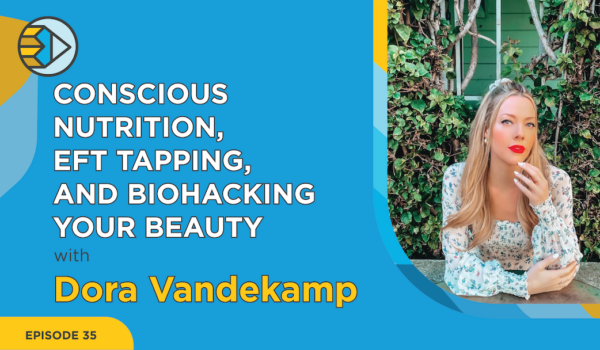
EP 33: 3 Study Habits For This Semester
We get it, you try to be productive and keep up with studying, but it just seems like all the papers and studying keeps piling up. This is why we wanted to give you a set of tools to work with before crunch time hits! Join Cath Anne, our Host & Top Writer on Episode 33 of “The Homework Help Show” as she provides you with 3 study habits that you can implement into your life right away!
Looking for study tips, help with essay writing, or advice on how to be a better student? Welcome to The Homework Help Show, a weekly show where we teach, assist, and offer valuable insights for student life. From study hacks to writing tips, discussions about student mental health to step-by-step guides on academic writing and how to write a resume, we’ve got you covered. Want your questions answered? Write them below or join the conversation on social media using the hashtag #askHHG
TRANSCRIPT:
Cath Anne: [00:00:11] Hey guys and welcome back to our channel. My name is Cath Anne and I am the host and a Top Writer with Homework Help Global and this is The Homework Help Show. On this show we provide you with valuable content for your academic and student life. Just a quick reminder every Monday at 7:00 p.m. Eastern Standard Time you can join me on Instagram Live. I will be doing a quick and just reminding you guys to check out some of our new content and our new videos. So I would love you guys on there, just check in and have a quick chat to see how things are going.
Cath Anne: [00:00:42] This week we are giving you a quick rundown of some study methods you can use right now and implement into your life. We also did a recent video on effective note taking techniques. That was Episode 27 so make sure to check that out for sure.
Cath Anne: [00:01:09] I get it, you’re doing everything you can to keep up on your studying. You are studying every night but it just seems like all the papers and all the exams are piling up. This is why we wanted to give you a set of tools you can work with and that you can implement into your life right now before crunch time hits, because we know it is coming.
Cath Anne: [00:01:30] So the first thing I wanted to suggest is before you start studying, set a pre-study routine.
Cath Anne: [00:01:37] First, always study in the same place every time. This can help you with recall when you’re going back and doing your exam. If you remember the place where you studied then you are more likely to recall the information that you studied at that specific place. It will help you bring back the memories of the specific information that you studied. Make yourself comfortable, but not too comfortable. You want to make sure that you’re wearing something comfortable but probably not your PJs because you’ll be more inclined to fall asleep or want to go back to bed. Grab a snack, grab some water, or a coffee or tea.
Cath Anne: [00:02:20] OK. Now, let’s talk about the tools you can use to study. One of my favorite methods is Pomodoro Technique and as you can see I have put it up on the board here. It is definitely one of my favorite techniques and something that I’ve recently applied to my own life. The Pomodoro Technique is a cyclical system. You work in short sprints and then you take a break and it makes sure that you are consistently productive because you are on this pattern. You also get to take regular breaks and that bolsters motivation and enhances creativity which I love.
Cath Anne: [00:02:59] So, you need to do Pomodoro is a timer and just so you know the Pomodoro Technique is actually named after, the man who invented it used a little tomato as his timer, so he named it Pomodoro because that is the name of tomato in Italian. So, all you need to do Pomodoro Technique is a pomodoro or a timer. First, you choose the task that has to be accomplished. So, if you wanted to study Chapter 1. That would be your task. Second, you set the Pomodoro to 25 minutes and that is all you need to do this technique. You work until the pomodoro rings and then you put a check on your sheet of paper. So, this is really important because it is going show that you’ve accomplished something and this is going to help keep you motivated. So, when you check off a task that’s going to help keep you motivated so make sure you’re doing that. Take a short five minute break 5 to 10 minutes is the max that you want to go for your break. So, you work for 25, it rings, five-minute break, maybe do a little walk around, take a glass of water. Then you go back into another 25-minute session. So, then you complete 4 of these rounds and finally on the fourth round you take a longer break. So, this might look like a 15 – 30 minute break in the end and then you jump into another round of 25-minutes study sessions.
Cath Anne: [00:04:39] So, when you take your longer break you’re going to want to do whatever you need to do you know re-charge. Maybe you have a sip of coffee, go for a walk, do some stretching, and then that will help you feel re-charged and then you’re jumping back into the 25-minute cycle again. So, that’s the Pomodoro Technique. I highly recommend it. There are some great apps out there that you can use to time. You can always just use your phone, your timer on your phone if you like as well.
Cath Anne: [00:05:19] So, I wanted to also discuss, beware of the forgetting curve. As you can see I have made note of it right here. When you’re learning new information there is a tendency to forget. At the beginning of when you learn new information this tendency is very steep. Forgetting naturally occurs when there’s no attempt to retain the information. When you’re studying make sure review your notes every 20 minutes to help you retain information.
Cath Anne: [00:05:48] So, you read something over, and then you want to review it again 20 minutes later. You can also use other interesting strategies like certain scents. So, for example you wore a certain perfume or burn a certain candle when you’re studying and you’re studying a specific topic and that can actually trigger your memory because it will be associated with other things in your surroundings. Sitting in the same spot, as I already mentioned, or listening to classical music, these are all ways to stimulate those other areas of the brain and help you to retain information and make your memories more vivid. So, check that out. The stronger the memory, so when you’re adding these other aspects in it is going to become a stronger memory, so, I really recommend doing this because the stronger the memory the more you are going to retain it.
Cath Anne: [00:06:41] Finally, we will talk about the use of spaced repetition. This is also a really great study strategy. Spaced repetition is a practice which gives the brain exercise spacing out the information in longer intervals of time.
Cath Anne: [00:06:59] OK. So, according to research done on the most effective way to learn, spaced repetition allows us to retain information for longer periods of time. So, that means that we will not only remember the things that we learn for the exam, we will remember them when our degree is completed. So, oftentimes we study just to pass an exam but if you’re in a professional field you really want to retain that information this can be a helpful mechanism to use.
Cath Anne: [00:07:30] So, spaced repetition works by asking you to review information at increasingly long intervals because that help your brain to remember it. You can set up a system by yourself, but there are now lots of online applications that you can use that you can set up on your phone or your computer. So, I suggest looking into that. One example is a system called Clever Deck which is a series of online flashcards. So, this is a great way to set this up for you and it is also already broken down into the spaced repetition method.
Cath Anne: [00:08:06] But, as I mentioned you can do it on your own. If you want set up on your own, you can use flash cards organized in a box. Pretty basic, but it really works. Create sections based on which information you know most and which information you know least. Set up a schedule for when you will revise the cards in each section of your box. If you answer the card correctly you put it into section that you will revisit less frequently. So that would go in the section of information that you already know pretty well. Whereas if you get the answer wrong you’re going to put it back in the information that needs to be re-visited more frequently.
Cath Anne: [00:08:48] So, then is going to space out the time between when you are learning the information you know more readily and it is going to give your brain a chance to learn the new information that you are not as familiar with.
Cath Anne: [00:09:03] Spaced repetition takes advantage of the way your brain stores information and it can be more effective than notetaking and other ways of studying
[00:09:11] So, I highly recommend this. Check it out online there’s lots of information out there.
Cath Anne: [00:09:21] Finally, I want to share an interesting tidbit that I learned while I was doing research for this. The Times New Roman font is the easiest font to retain and read. Because it is easier to read, if you write notes in this font you will be able to read faster and more efficiently and it will stay in your brain longer. So, it’s interesting because I’m not a huge fan of Times New Roman font. However, if you are in academia you will recognize that most professors get you to write in Times New Roman. So, I thought that was really interesting technique. So, try typing your notes in Times New Roman and see if it has any effect on your retention.
[00:10:06] Okay. So that’s it for me this week. If you do have any questions please leave them in the comments below. If you’re looking to connect with us, we have all our social media platforms linked in the description box below. If you liked this video please give us a thumbs up and make sure you subscribe to our channel. So that you have an opportunity to stay in the loop and get more of our information. That’s it for me this week guys. Talk to you soon. Join me on Monday at 7pm EST on Live on Instagram. I hope this video was of benefit and take care.
Share:

